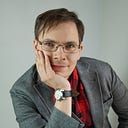Member-only story
🐫 How OCaml Was Born: The Story Of Wine Chateux
If you wonder how OCaml was created, it’s the right place for you
It’s 1995. In a small wine chateux in the suburban France friends meet, eat local cheese and drink french red wine. It’s a sunny day, they laught and enjoy their company.
The history of OCaml is strongly tied with French Institute for Research in Computer Science and Automation.
It’s a scientific institute located 19km west from Paris in Le Chesnay-Rocquencourt, near the 200 hectar Arboretum de Versailles-Chèvreloup, one of the most famous French gardens, and of course near Versailles.
Didier Rémy and Jérôme Vouillon are one of the fathers of the language we know today as OCaml that was released in 1995, while there are a lot more people that were involved.
Their work revolved mostly around adding typing and objects to a long line of Caml variants originating in INRIA work done in 1987 by the Gérard Pierre Huet team.
Didier Rémy at the time of 1996 had already several years of academic teaching and was a member of the misterious Cristal project that explored stongly typed languages.
For Jérôme Vouillon work on object oriented OCaml was part of his thesis.
It’s hard to dig into the details of the Cristal project, but after a lot of search I’ve found some historical details.
The Ocaml language was almost completely rewritten from Caml Light. The first internal release took place in September 1995. Until November 1996 there were already eleven releases made. Somewhere along the road Ocaml was made public.
The main objective was to design a language and system that is good for the web growth, can scale easily on multiple platforms, is good for education and production, and handles parallel programming well. Not bad for a language built 27 years ago!
It was even used to write an Internet browser called MMM that supported OCaml applets!
